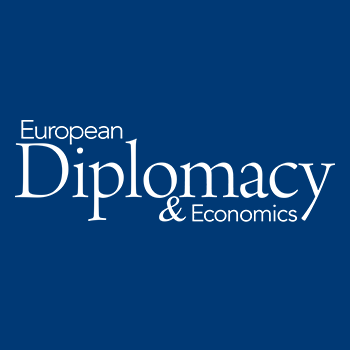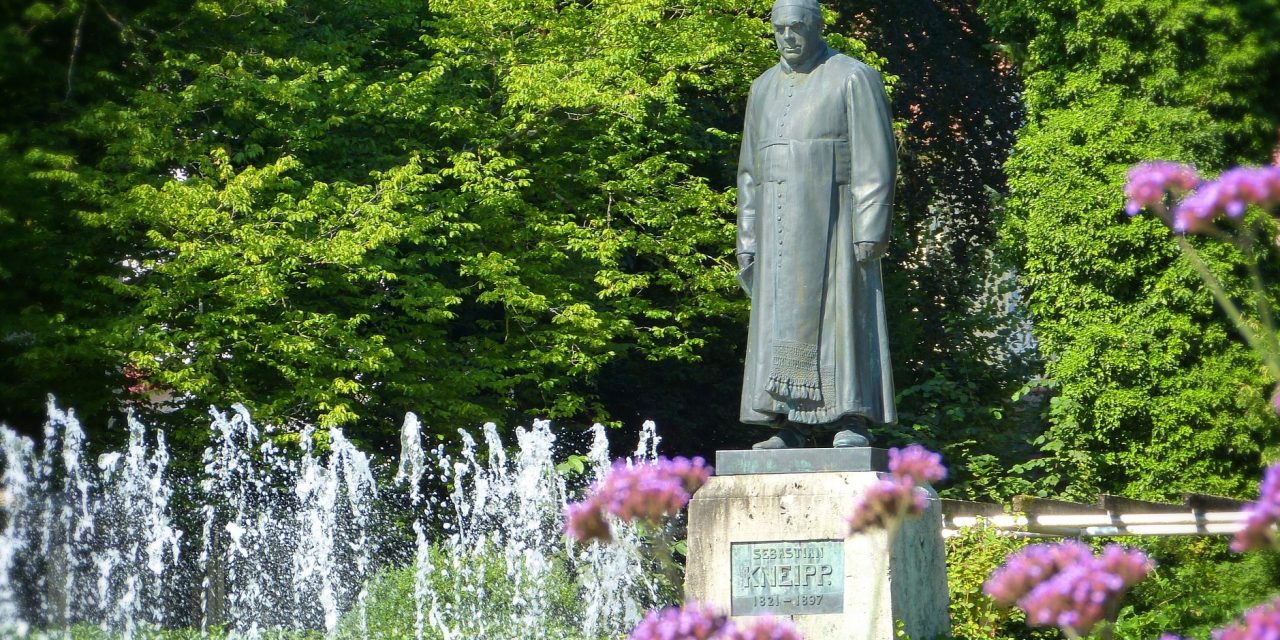
Photo credit: Kur- und Tourismusbetrieb Bad Wörishofen
Image by silviarita from Pixabay
“Nature has provided us generously with everything we need to remain in good health.”
– Sebastian Kneipp,
the German priest sought to treat the entire person, mind, body and soul…
Year 2021 marks the 200th birthday Sebastian Kneipp (1821–1897), the German Catholic pastor who in addition to his profession, was also involved in naturopathic activities. Due to his healing activities, naturopathy has gained a whole new momentum. Kneipp has developed a world-famous hydrotherapy method that is still known as the Kneipp cure.
At a young age, Sebastian Kneipp suffered from tuberculosis, and medicine at the time seemed to be helpless. Kneipp was almost in the final stage of the disease when he came across Johann Sigmund Hahn’s book: The Cure of Cold Water. Having read that book he decided to take naked short baths in the icy Danube. Soon his health condition began to improve miraculously. He continued to bathe at home, which made him completely recover. After this, he first began to give advice to his close acquaintances but later his healing knowledge reached Wörishofen. To satisfy the increased interest, he published a book, which was such a great success that more and more pilgrims wishing to recover visited him. It was then that he conceived the idea of founding a medical institution in Wörisheim.
“The best health measures are those that also make you feel strengthening.”
Sebastian Kneipp’s principle was that the soul and body of man could only be healed in unity. His five pillar-based health care methods aim to preserve and heal the harmony of body, soul and spirit.
The five pillars of the cure are: hydrotherapy, nutrition (whole foods, low sugar and fat, no alcohol, nicotine and caffeine), exercise (endurance sports), herbs and so-called balance therapy.
Water is the core pillar of the Kneipp’s Therapy.Initially, the treatment was limited to water treatment only, but later Kneipp supplemented it with advice on diet and lifestyle changes.

Photo credit: Kur- und Tourismusbetrieb Bad Wörishofen
The idea of hydrotherapy is based on the assumption that through the skin, the most diverse stimuli can be elicited with water of different temperatures. Thus, the essence of the cure is based on the fact that cold water constricts the skin vessels while distracting heat from the body. From thermoregulation and metabolism point of view, skin plays a much more important role than we might think as several nerve endings can be found in the skin cells. Hydrotherapy affects the nerve system through the skin. They harmonize heart function, metabolism, blood circulation, respiration, immune system, and glandular activity. They help the skin clearing, its excretory function and the development of mental balance. A great advantage of hydrotherapy is that in most cases patients can use it on their own.

Photo credit: Kur- und Tourismusbetrieb Bad Wörishofen
Kneipp treatment relieves cardiovascular disorders, respiratory diseases, gastrointestinal disorders, sleep disorders and pain, as hydrotherapy stimulates and trains the metabolism immune system and blood circulation.
“Movement increases the zest for life and helps people by strengthening their bodies.”
Proper diet, aerobic sports, herbal treatments and a well-structured agenda further enhance the impact of hydrotherapies.
The hometown of kneipping
In Bad Wörishofen, the hometown of kneipping, the variety of treatments include 130 different types of showers, baths, wrappings, compresses and rinsing. The Kneipp cure is more relevant today than ever before, however, the therapy today is used under medical supervision and supplemented with other therapies if necessary. The original philosophy has survived with some methods adapted to modern needs though.
In May, Bad Wörishofen (in Bavaria) will house the central bicentennial celebrations organized by the German Kneipp-Bund, the largest non-profit German health association founded in 1891 together with its more than 500 regional Kneipp-Vereine and associated institutions. As part of the bicentenary, Kneipp’s portrait will be featured on a special 2021 stamp and a 2021 collector silver coin, both issued by the German government.
To show their acknowledgment, the German UNESCO Commission has included “Kneippism – Traditional Knowledge and Practice According to Sebastian Kneipp” in the Nationwide Inventory of Intangible Cultural Heritage in December 2015.

Photo credit: Kur- und Tourismusbetrieb Bad Wörishofen

Photo credit: Kur- und Tourismusbetrieb Bad Wörishofen
Related Articles
Related
Pablo Picasso
The Picasso 1973-2023 celebration seeks to showcase the career of a European artist who not only drew on his deep knowledge of heritage and the principles of tradition, but also on his understanding of classicism as an ethical value to create iconic, internationally acclaimed works. The initiative aims to highlight Picasso’s career during which he produced universal symbols such as Guernica, today a collective emblem of the defence of human rights.
Fairytale City in France: The Delightful Colmar Christmas Market
Christmas traditions are, as you know, very lively in Alsace. For centuries, the region has been observing Advent, the period that commences the fourth Sunday before Christmas. Time suddenly stops, and you enter into another dimension, one of wonder and emotion. You are in Colmar, a city of art and history, whose half-timbered houses are nestled between the hills of the vineyard and the Rhine Plain.
Naturel Hotels & Resorts
The Naturel Hotels & Resorts, three hotels that are situated in the heart of Carinthia offer unforgettable holiday experiences for families and active travellers. The recently modernised mountain resort DIE KANZLERIN, which is located on the Gerlitzen Alpe near Lake Ossiacher See, offers the best of both worlds: A holiday in the mountains, which is still close to the lake. The modern suites dispose of 1-2 bedrooms, a fully equipped kitchen and a balcony with a fantastic panoramic view.




















